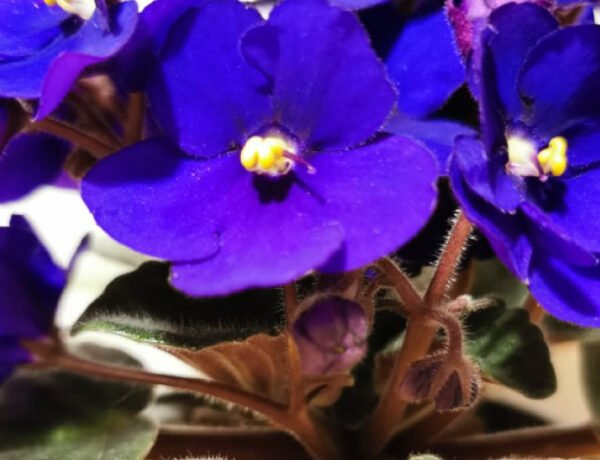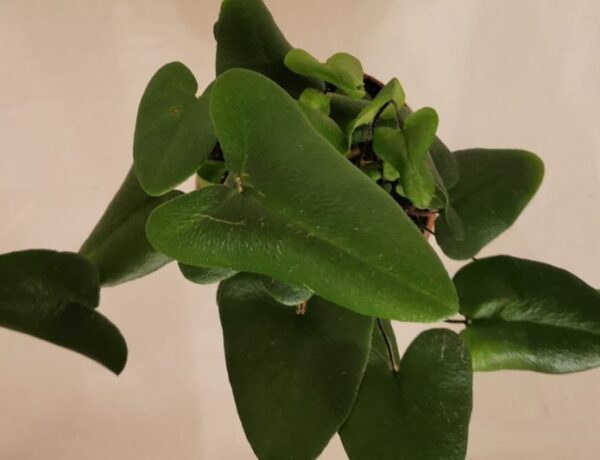Nerve plants, scientifically known as Fittonia albivenis, are a popular choice among indoor plant enthusiasts for their beautiful mosaic foliage and manageable care needs. Native to the tropical rainforests of South America, these plants are loved for their unique, vein-like patterns (hence the name ‘nerve’) and the variety of foliage colors.
In this guide, we will provide a comprehensive overview of how to care for a nerve plant and help it flourish in your indoor garden.
Table of Contents
1. General Information & Taxonomy
| Scientific name: | Fittonia albivenis |
| Common names: | Nerve plant, Mosaic plant, Painted net leaf |
| Native to: | South America (Peruvian Andes) |
| Toxicity: | Non-toxic to humans and pets |
| Mature size: | 3-6 inches in height, 12-18 inches in spread |
| Category: | Perennial Herb |
| Growth Rate: | Moderate |
| Dormancy period: | Winter |
| Hardiness: | USDA zones 10-11 |

2. Nerve Plant Care & Growing Requirements
» Watering
You should aim to water the nerve plant when the top inch of soil feels dry to the touch. However, make sure to avoid overwatering, as this can lead to root rot. A good rule of thumb is to let the plant dry out slightly between watering.
Note: The nerve plant is quite the drama queen when it comes to watering, often wilting dramatically if its hydration needs are overlooked. But don’t worry too much; with a timely dose of water, they can bounce back to their vibrant, lush self in just a few hours.
» Light
When it comes to light requirements, nerve plants are somewhat forgiving. They prefer indirect, low to medium light, making them a perfect fit for spaces that don’t receive strong sunlight. Nevertheless, avoid placing your nerve plant in an area that’s too dark, as insufficient light can cause the plant’s vibrant veining to lose its color.
» Soil
For soil, nerve plants prefer a well-draining mix that can hold moisture without becoming waterlogged. You can achieve this by using a general-purpose houseplant mix combined with perlite or orchid bark to increase drainage. This combination will provide your nerve plant with the necessary nutrients while ensuring the roots are not sitting in water.
» Temperature
Being tropical plants, nerve plants have a preference for warm temperatures. They thrive best in temperatures ranging from 60 to 80 degrees Fahrenheit (15-27 degrees Celsius). Cold drafts or sudden temperature changes can stress the plant, so make sure to position them away from drafty windows and doors.
» Humidity
In their natural habitat, nerve plants enjoy high humidity levels. To maintain this, you can place the plant on a tray filled with pebbles and water, which increases humidity as the water evaporates. Alternatively, use a humidifier, or mist the leaves occasionally. However, be cautious not to over-mist as it can lead to fungal issues.
» Fertilizer
Although not heavy feeders, nerve plants will appreciate the occasional boost in nutrients. A balanced houseplant fertilizer applied every two weeks during the growing season (spring and summer) can help keep your nerve plant healthy and vibrant.
3. Nerve Plant Maintenance and Propagation
» Repotting
Nerve plants have a moderate growth rate and generally need to be repotted every 1-2 years, or when the plant becomes root-bound in its current pot. Spring is the best time to repot, just before the plant enters its growing season. Choose a pot that’s slightly larger than the current one and make sure it has good drainage.
» Pruning
Regular pruning can help maintain the nerve plant’s bushy appearance and prevent it from becoming leggy. Remove yellowed or dead leaves as necessary. Pruning can also stimulate growth and make your plant fuller.
» Propagation
One of the joys of plant ownership is propagation, and nerve plants are relatively easy to propagate. You can do this by taking stem cuttings, making sure each cutting has at least two sets of leaves. Place these cuttings in water until roots develop, then transfer them to soil. Propagation not only allows you to multiply your collection but it’s also a great way to share plants with friends and family.
4. Common Issues
» Leaves Turning Yellow
Overwatering is a common cause of yellow leaves in nerve plants. Always ensure that your plant’s soil is well-draining and avoid letting it sit in water. It’s better to underwater than overwater. If you notice yellow leaves, check the moisture level of the soil and adjust your watering schedule accordingly.
» Leaves Turning Brown
Brown leaves can indicate a lack of humidity or overexposure to direct sunlight. As nerve plants love high humidity, consider the methods mentioned above to increase humidity levels. Also, ensure your plant is not receiving harsh, direct sunlight which can scorch its delicate leaves.
5. Nerve Plant Diseases & Pests
Despite their hardy nature, nerve plants can be susceptible to common houseplant pests such as aphids, spider mites, and mealybugs. Regularly inspect your plant for signs of these pests and treat any infestations promptly with insecticidal soap or a neem oil solution. Keeping your plant healthy is the best defense against pests and diseases.
Conclusion
With its vibrant, veined leaves and manageable care requirements, the nerve plant can be a stunning addition to any indoor plant collection. By following these care tips, you can ensure your nerve plant remains a robust and eye-catching element of your indoor garden for years to come. Happy gardening!






No Comments